 by our College Data Analytics Team
by our College Data Analytics TeamSpalding total enrollment is approximately 1,596 students. 707 are undergraduates and 496 are graduate students.
Male/Female Breakdown of Undergraduates
The full-time Spalding undergraduate population is made up of 70% women, and 30% men.
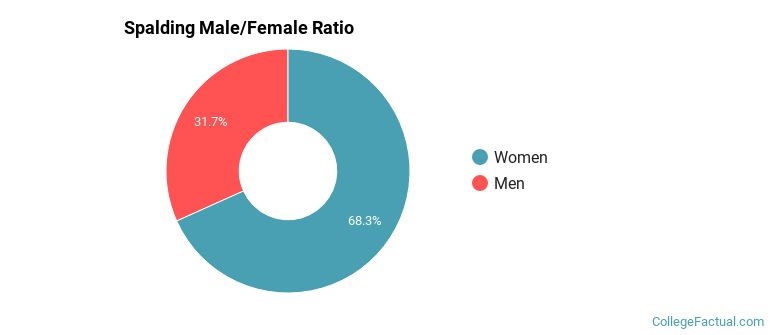
For the gender breakdown for all students, go here.
Spalding Racial/Ethnic Breakdown of Undergraduates

| Race/Ethnicity | Number |
|---|---|
| White | 456 |
| Black or African American | 142 |
| Multi-Ethnic | 42 |
| Hispanic | 38 |
| Asian | 16 |
| Unknown | 10 |
| Native Hawaiian or Pacific Islander | 0 |
| International | 0 |
See racial/ethnic breakdown for all students.
Male/Female Breakdown of Graduate Students
About 80% of full-time grad students are women, and 20% men.
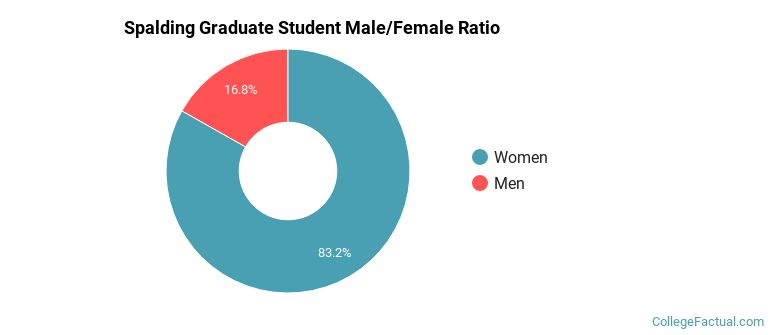
For the gender breakdown for all students, go here.
Spalding Racial-Ethnic Breakdown of Graduate Students
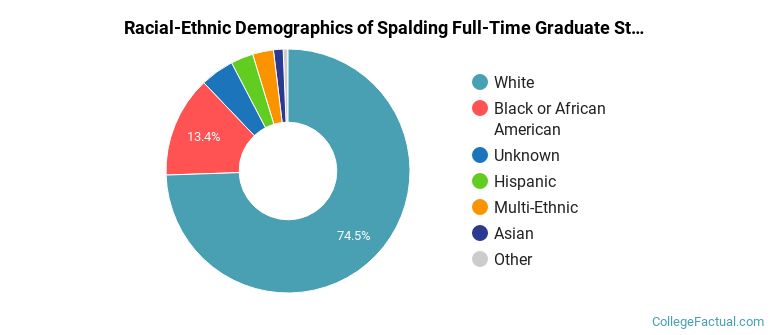
| Race/Ethnicity | Number |
|---|---|
| White | 350 |
| Black or African American | 89 |
| Hispanic | 17 |
| Unknown | 17 |
| Multi-Ethnic | 16 |
| Asian | 7 |
| Native Hawaiian or Pacific Islander | 0 |
| International | 0 |
See racial/ethnic breakdown for all students.
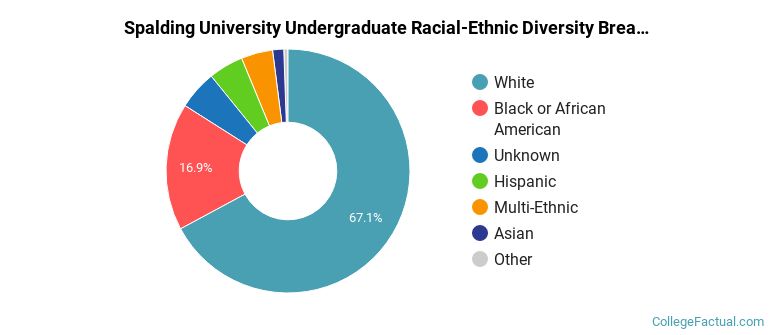
| Race/Ethnicity | Number |
|---|---|
| White | 1,079 |
| Black or African American | 298 |
| Hispanic | 69 |
| Multi-Ethnic | 66 |
| Unknown | 47 |
| Asian | 31 |
| International | 1 |
| Native Hawaiian or Pacific Islander | 0 |

There are approximately 1,206 female students and 390 male students at Spalding.
Spalding ranks 1,462 out of 2,183 when it comes to geographic diversity.
17.26% of Spalding students come from out of state, and 0% come from out of the country.

The undergraduate student body is split among 9 states (may include Washington D.C.). Click on the map for more detail.
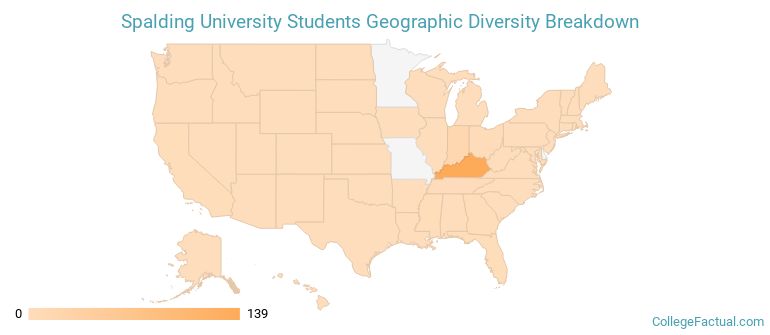
| State | Amount |
|---|---|
| Kentucky | 139 |
| Indiana | 17 |
| Ohio | 3 |
| Tennessee | 2 |
| California | 1 |
A traditional college student is defined as being between the ages of 18-21. At Spalding, 26.56% of students fall into that category, compared to the national average of 60%.
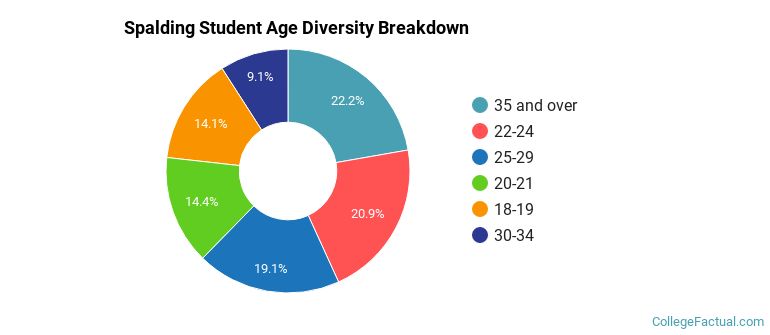
| Student Age Group | Amount |
|---|---|
| 35 and over | 428 |
| 22-24 | 403 |
| 25-29 | 368 |
| 20-21 | 278 |
| 18-19 | 272 |
| 30-34 | 175 |
| Under 18 | 0 |
Footnotes
*The racial-ethnic minorities count is calculated by taking the total number of students and subtracting white students, international students, and students whose race/ethnicity was unknown. This number is then divided by the total number of students at the school to obtain the racial-ethnic minorities percentage.
References
Department of Homeland Security Citizenship and Immigration Services
Read College Factual's Diversity Ranking Methodology.